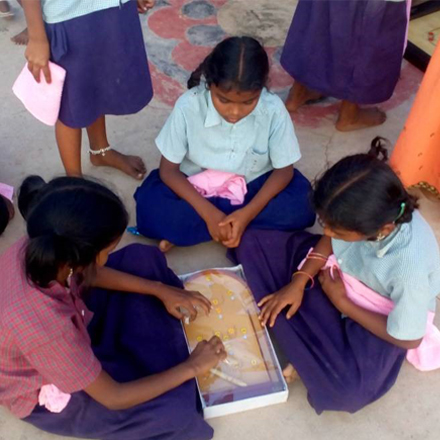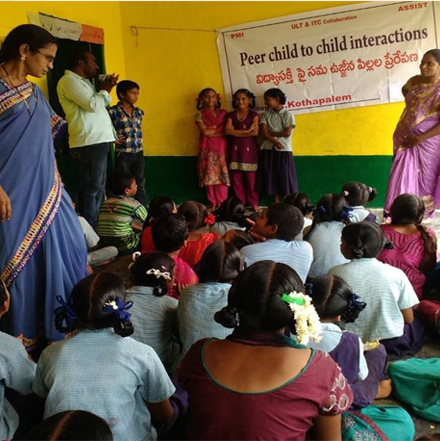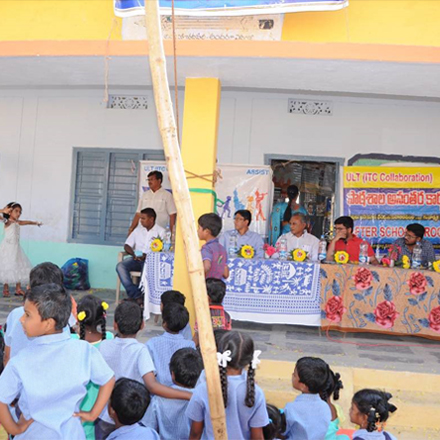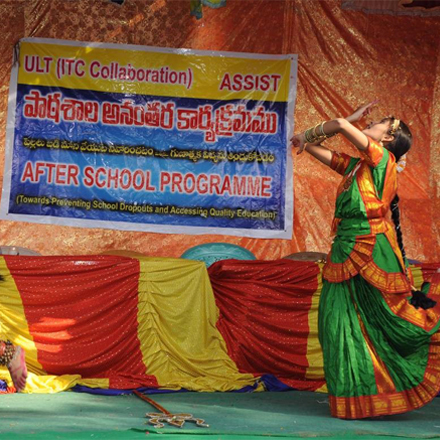
Ten schools were identified in the burley tobacco-growing villages in the region surrounding Vinukonda, a small town in the Guntur district. Around 10,000 farmers and 17,000 laborers work in burley cultivation in the region.
This region is in a rain-shadow zone that allows for only single-crop cultivation, which makes it essential for that single crop to prosper. During labor-intensive periods, whole families often pitch in, with children accompanying their parents to work on the farms. Working in the family enterprise, can result in irregular school attendance which leads to poor performance and low grades, which makes children more vulnerable to dropping out of school. Poverty is certainly a factor for the rate of child labor in the Vinukonda region, but there are other non-economic reasons as well. These include a lack of school infrastructure and the absence of community-driven mechanisms to support underprivileged or underperforming children.
Our initiative was designed to combat child labor in the region, as well as address the following issues: lower school enrollment and higher school dropout rates due to lack of school infrastructure; higher dropout rates for girls due to lack of proper sanitation facilities; a higher rate of irregular attendance due to frequent sickness through water-borne diseases and a lack of protected drinking water; and the lack of school- or community-driven mechanisms for early identification of at-risk children.
The objectives of the project are: to sensitize the community to the risks of child labor; to inculcate a community-driven mechanism for the identification of those vulnerabilities that contribute to poor performance and truancy; to prevent children from dropping out through the After School Program; and to contribute for the effective implementation of agriculture labor standards (ALP) for a sustainable tobacco farming.
Our research shows that the vulnerability of a child for dropping out of school depends on two sets of factors—permanent and dynamic. The permanent set of factors is determined by the nature of the child’s circumstance or environment. These are also known as Risk Factors (RF) and include social and economic backgrounds, as well as geographical and physical circumstances. The dynamic set of factors are those that a child is exposed to from time to time and fluctuate such as family functions, sickness, illness of an earning family member, losing interest in studies, etc. These are also called Dropping out Warning Signals (DWS). RF tells us which children need to be focused upon, while DWS tell us what to look for.
The project encompasses two broad areas of activities—awareness generation and the After School Program.
Awareness generation is key to informing all stakeholders on the importance of child education and creating child-labor-free communities to promote the prosperity and sustainable development of the region. We have organized educational activities including street plays, cultural programs, wall writings, and mass meetings to communicate this message to the public. We have reached around 4,890 families, and worked with 10 community structures, 285 self-help groups, and 10 school management committees to carry forward the child-labor-free community concept. So far, studies show that these efforts have successfully increased awareness of the importance of child education among all the stakeholders.
The ASP was conceptualized in response to a finding that 92% of primary school and 71% of higher school children were taking care of themselves after school in the Vinukonda region. Being unsupervised after school has been found to increase the likelihood that a child will commit a delinquent act, get injured, perform poorly in school and possibly drop out of school. During the peak of the tobacco-growing season, the number of parents at home after school drastically declines, increasing the number of unsupervised children at home. Therefore, we initiated the ASP at 10 schools to reduce the dropout rate and eliminate child labor.
We have prepared training modules and a syllabus for the program, recruited volunteer teachers, provided teacher training, supplied materials, and prepared classrooms. We supplied each of the 742 children with school bags containing one pair of shoes and two pairs of socks, two napkins and soap for cleaning their hands, indoor play materials, and notebooks.
As the children are often hungry after school, we decided to provide healthy snacks for all the children, which allows them to be fully engaged in the educational and enrichment activities. Offering food also helps attract children to the program and keeps them coming back. Some of the activities offered include yoga, classical dance, meditation, and indoor games.
There has been wonderful response for the ASP from all sectors of the community. Parents say they are very happy with the program and many say that it gives them extra energy for work knowing that their children are being taken care of.
Many have reported that their children's physical well-being has improved substantially with the healthy habits they are learning and practicing in the ASP, including washing, meditation, etc. Physical improvements have been observed among the children in terms of their weight, height and ability to participate in games and sports. Behavioral changes have also been observed among the children in the way they are dressing, combing their hair, respecting their elders, and in many other aspects which have benefited the communities.
Teachers and parents are observing that these children now have better work and interpersonal skills; improved school attendance; improved behavior in school; better grades and achievements; more positive attitudes toward school; improved homework quality; reduced delinquency; better relations with peers; and reduced substance use and violence.
Education department officials have been monitoring the progress of the ASP, and their findings show that the program has yielded a positive impact. Indeed, the ASP has become a very successful program in preventing children from dropping out of school and working in tobacco. Results so far have shown that since implementing the ASP, the participating schools have already seen a 5% to 7% increase in attendance, which has helped to reduce the incidence of child labor. We see that as a great success and look forward to continuing these efforts.









